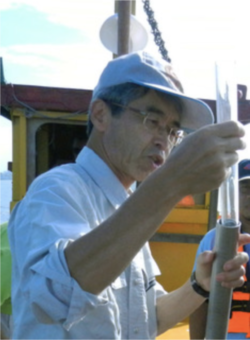
Education
Kazumi was born on 22 April 1948 in the countryside of Kyoto, Japan. He graduated from Nara University of Education with a Bachelor of Education in Earth Sciences 1971. He studied dinoflagellate micropaleontology under the supervision of Professor Misaburo Shimakura, and got a Master of Science in Geology from Osaka City University in 1974. He was awarded the PhD degree in Science on 1980 with the PhD thesis entitled “Dinoflagellates and acritarchs from the upper Cenozoic formations in the Niigata area, Japan.” Thus, Kazumi started his research activity as a micropaleontologist studying fossil dinoflagellates.
Life and Career
After getting his master’s degree, Kazumi jointed a faculty member of Biology Department of Osaka City University as an Associate Researcher (1974-1979). Thereafter, he moved to the Faculty of Liberal Arts, Nagasaki University, as an Associate Professor (1979-1987) and then was promoted to be a Full Professor (1987-1997). In 1985-1986, Kazumi jointed the Bujak-Daives Group in Calgary, Canada, as a Visiting Researcher and conducted the Mesozoic to Cenozoic dinoflagellate cyst biostratigraphy of continental offshore stratigraphic test wells drilled in the Canadian arctic. In his life in Nagasaki University, he worked as an Executive Vice-President for General Affairs and Evaluation (2005-2008) and as a Director of Institute of East China Sea Research (2006-2011). Kazumi retired from Nagasaki University at the end of March 2014 and was given the title of Professor Emeritus of Nagasaki University. He is now living in Kyoto and still works on modern and fossil dinoflagellate cysts in the relation to HABs as a Guest
Researcher in Osaka Museum of Natural History (beginning in 2017) and an Invited Researcher at the Osaka Institute of Technology (beginning in 2018). The article entitled “Cyst and thecate forms of Pyrophacus steinii (Schiller) Wall et Dale” written by Kazumi was selected as the Outstanding Paper Award from the Palaeontological Society of Japan” in 1987. Kazumi received the Academic Award from
the Palaeontological Society of Japan on 1989 under contributions of “Paleontological study on Cenozoic dinoflagellates”. He also received the Outstanding Paper Award from the Fisheries Society of Japan on 2005 for the article, “Effect on bivalve mollusks of a harmful dinoflagellate Heterocapsa circularisquama isolated from Omura Bay, Japan, and its growth characteristics, Nippon Suisan Gakkaishi, 71, p. 746-754” with his colleagues.
Research strategy and mentoring
In Japanese coastal areas, a big bloom of Gymnodinium sp. type 65 (now identified to be Karenia mikimotoi) first occurred in Omura Bay, West Japan, in 1965 and subsequently . huge aquaculture damages have been caused by K. mikimotoi together with the raphidophyte Chattonella antiqua in the Seto Inland Sea and Kyusyu areas. Kazumi was . stimulated to join to the national HAB project team led by Professor Tomotoshi Okaichi to study the ecology and taxonomy of dinoflagellate cysts. He investigated the vertical occurrence of cysts of the PSP causative dinoflagellate, Gymnodinium catenatum, in several core sediments collected from different locations using sedimentological techniques. He clarified that G. catenatum is not a species artificially introduced into Japan, because this species has inhabited the country for at least two hundred years. Concerning his contributions outside of Japan, Kazumi, together with his colleagues, first found and described the cyst of Pyrodinium bahamense, one of the important PSP causative organisms in the Southeast Asia in surface sediments of Samar Sea, the Philippines. Thereafter, he vigorously conducted investigations on the geographical distribution of P. bahamense not only in Southeast Asia but also Central America and the Middle East. Based on the concept that cysts of harmful dinoflagellate species can indicate the distribution of these organisms, he travelled to Korea, Thailand, Indonesia, Malaysia, Vietnam, China, and Australia to share scientific knowledge of modern dinoflagellae cysts as part of a JSPS Researcher Exchange Program. Furthermore, Kazumi attended to the Management and Training Workshop “Biology Epidemiology, and Management of Pyrodinium Red Tide” at Bandar Seri Begawan, Brunei, in May of 1989. Kazumi served as a lecturer at IOC-DANIDA Training Course on the Taxonomy and Biology of Harmful Marine Microalgae in Brazil in 1997 and at Copenhagen in 1999 and 2000. He was the chair of the 7th International Conference of Fossil and Modern Dinoflagellates on 2003 at Nagasaki, Japan.
Kazumi’s second area of interest with a HAB focus is eutrophication in coastal water. Using geological science techniques, Kazumi investigated changes of dinoflagellate cyst assemblages preserved in sedimentcores in order to clarify water quality changes in Tokyo Bay during the Anthropocene. He recognized the important role of eutrophication in determining dinoflagellate cyst assemblages. One of eutrophication signals in dinoflagellate cyst assemblages is called the “Heterotroph Signal”, suggested by increase of heterotrophic species cysts, is caused by an increase of nutrients that stimulates phytoplankton blooms which may increase prey organisms for heterotrophic dinoflagellates. He is a co-author of the “Manual on Harmful Marine Microalgae” edited by Hallegraeff, G.M. et al., and published in IOC Manuals and Guides No. 33, UNESCO in 1995. This manual was thereafter revised by K. Matsuoka and Y. Fukuyo and published in 2000 as the book “Technical Guide for modern dinoflagellate cyst study” (WESTPAC-HAB/WESTPAC/IOC), supported by the Japan Society for the Promotion of Science. This book has contributed to HAB studies as a key manual.
His Ph.D. students are: Rika Fujii, Koichiro Mizushima, Hisae Kawami, Hyun-Jin Cho, Hyon-Ho Shin, Toshifumi Yamatogi, Tatsuya Yurimoto. He mentored the following postdoctoral fellows; Russel P. W. Stancliffe, Makoto Yoshida, Mitsunori Iwataki, Yoshihito Takano, Zhao-hui Wang, Hiral Aydin, Kenneth Neil Mertens.
10 Key publications
Matsuoka, K. 1999 Eutrophication process recorded in dinoflagellate cyst assemblages of Yokohama Port, Tokyo Bay, Japan. The Science of the Total Environment 231, 17-35.
Yang, Z. B, Takayama, H., Matsuoka, K., Hodgkiss, I. J. 2001 Karenia digitata sp.nov. (Gymnodiniales, Dinophyceae), a new harmful algal bloom species from the coastal waters of west Japan and Hong Kong. Phycologia 39, 463-470.
Matsuoka, K., Fujii, R., Hayashi, M., Wang, Z.-H. 2006 Recent occurrence of toxic Gymnodinium catenatum Graham (Gymnodiniales, Dinophyceae) in coastal sediments of West Japan. Paleontological Research 10, 117-125.
Iwataki, M., Kawami, H., Matsuoka, K. 2007 Cochlodinium fulvescens sp. nov. (Gymnodiniales, Dinophyceae), a new chain-forming unarmored dinoflagellate from Asian coasts. Phycological Research 55, 231-239.
Mizushima, K., Matsuoka, K., Fukuyo, Y. 2007 Vertical Distribution of Pyrodinium bahamense var. compressum (Dinophyceae) cysts in Ambon Bay and Hurun Bay, Indonesia.Plankton & Benthos Research 2, 163-174.
Iwataki, M., Kawami, H., Mizushima, K., Mikulski, C.M., Doucette, G.J., Relox Jr. J.R., Anton, A., Fukuyo Y., Matsuoka, K. 2008 Phylogenetic relationships in the harmful dinoflagellate Cochlodinium polykrikoides (Gymnodiniales, Dinophyceae) inferred from LSU rDNA sequences. Harmful Algae 7, 271-277.
Matsuoka, K., Mizuno, A., Iwataki, M., Takano, Y., Yamatogi, T., Yoon, Y.-H., Lee, J.- B. 2010 Seed populations of a harmful unarmored dinoflagellate Cochlodinium polykrikoides Margalef in the East China Sea. Harmful Algae 9, 548-556.
Mertens, K. N., Wolny, J., Bogus, K., Ellegaard, M., Limoges, A., de Vernal, A., Gurdebeke, P., Omura, T., Abdlrahman Mohd. A., Matsuoka, K., 2014 Taxonomic re-examination of the toxic armored dinoflagellate Pyrodinium bahamense Plate 1906: can morphology or LSU sequencing separate P. bahamense var. compressum from var. bahamense? Harmful Algae 41, 1-24.
Li, Z. Han, M.-S., Matsuoka, K., Shin, H.-H. 2015 Identification of the resting cyst of Cochlodinium polykrikoides Margalef (Gymnodiniales, Dinophyceae) in Korean coastal sediments. Journal of Phycology 51, 204-210.
Matsuoka, K., Ikeda, Y., Kaga, S., Kaga, M., Ogata, T. 2018 Repercussions of the Great East Japan Earthquake tsunami on ellipsoidal Alexandrium cysts (Dinophyceae) in Ofunato Bay, Japan. Marine Environmental Research 135, 123-135.
----
Prepared by Ichiro Imai.

